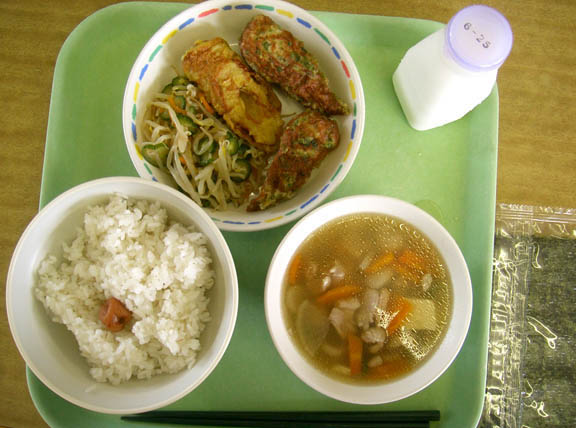
Fried chikuwa (fish cake) in curry (yello) and aonori (green) batter.
Beansprout, carrot, and cucumber salad.
Chicken based soup with carrots and gobo (burdock root).
Gohan (rice) with an umeboshi (pickled plum).
Nori (seaweed).
In Japanese schools, ranging from hoikuen (nursery school) to chugakko (junior high school), children are usually provided with meals called kyushoku. Depending on where the school is located, kyushoku can range from factory produced pre-packaged slop (a usual complaint of city JETs) to locally produced balanced and healthy meals. Luckily, my school fell in the second category and I decided to document what I ate at school on the 13 separate occasions that I remembered to take pictures at lunch.
These Kyushoku were made by women who live in Ubuyama and planned out by the nutritionist, Mrs. Umei. All of the meals are carefully planned out to provide a balance of protein, carbohydrates, vitamins, minerals, fiber, and other important dietary components. When I first started eating kyushoku I could only finish half of the meals and had to take the rest home. It is commonly observed that teachers gain weight after being transfered to Ubuyama because of the size of the servings (this is a matter of meal size, not of meal content).
It is interesting to note that the Japanese school system started encouraging the students to incorporate new things into their diet after the U.S. occupation. Milk, bread, and meat products were uncommon if not completely absent before the end of the war in the Pacific. All of the old people I have talked to about this tend to agree: the Japanese started to grow bigger with the change in diet, and today’s Japanese youths are some pretty big and healthy kids. If you don’t believe me go to any high school’s judo practice and then see what you think.
Note: Every day, milk is included as part of a balanced meal. The milk is produced and packaged locally in Ubuyama.
Be sure to check out School of Rice, a new site authored by me and my brother. It will chronicle some of the riced out rides that we happen upon and other things that fit under the paradigm of the School of Rice.
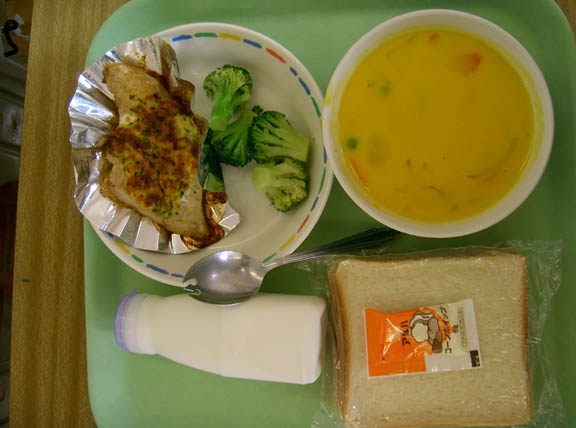
Roasted breast of chicken with a parsley yogurt sauce.
Broccoli florets.
Cream of kabocha (pumpkin) soup.
White bread and margerine.
Bonus: Stainless steel spork.
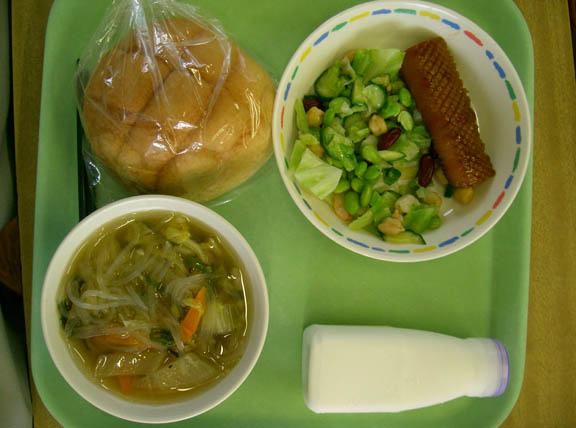
Teriyaki squid steak.
Lima bean/kidney bean/chickpea/cabbage salad with a vinagarette dressing.
A variation of chicken soup.
Melon pan (melon bread: this refers to the shape, not the flavor. It is basically Japan’s version of pan dulce, meaning that the bread has some sugar in and on it).
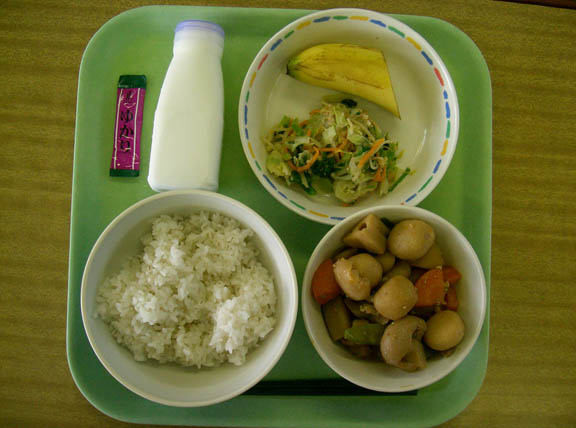
Stewed potatos, carrots, gobo, renkon (lotus root), and snow peas.
Half of a banana.
Carrot, cabbage, beansprout, and spinach salad with peanut-based dressing.
Mugigohan (rice with buckwheat mixed in).
Akashiso furikake (red shiso rice topping).
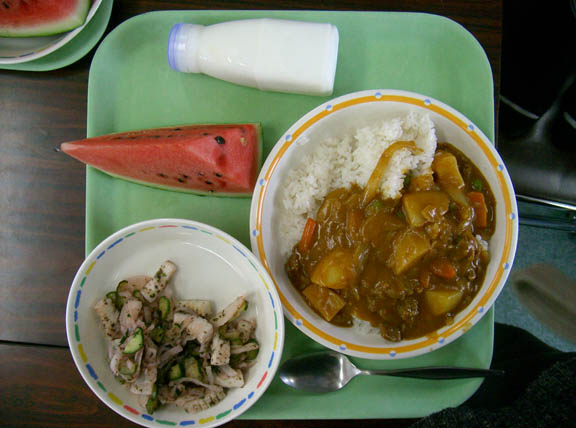
Beef curry and rice.
Ika (squid) and cucumber salad with shiso dressing.
Watermelon.
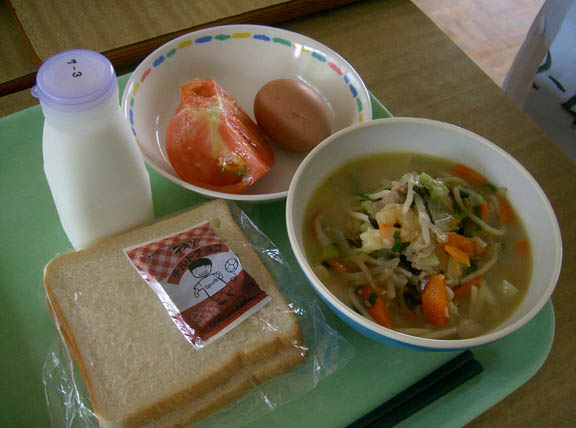
Tomato third.
Hard boiled egg.
Champon ramen (Nagasaki-style)
White bread with chocolate “pudding” sauce.
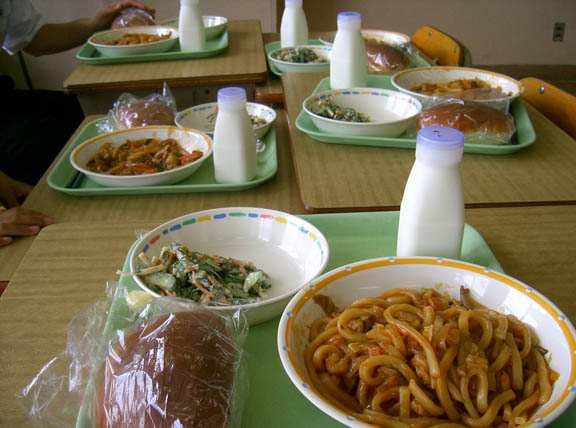
Udon with curry sauce.
Cucumber,carrot, and macaroni salad with mayonaisse.
Hot dog bun-type bread sans hot dog.
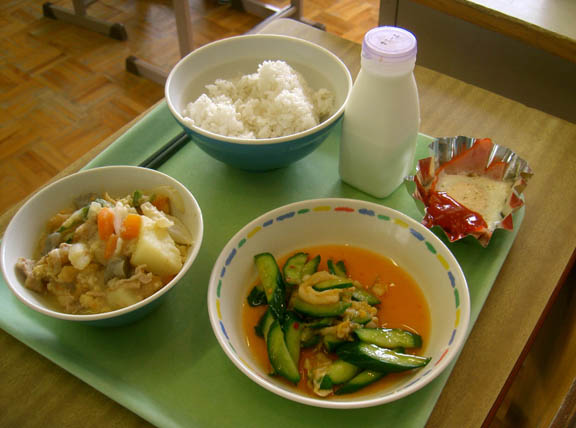
Cucumber salad with kimchee base dressing.
Cup-o-ham-n-egg.
Gohan and some sort of chop suey.
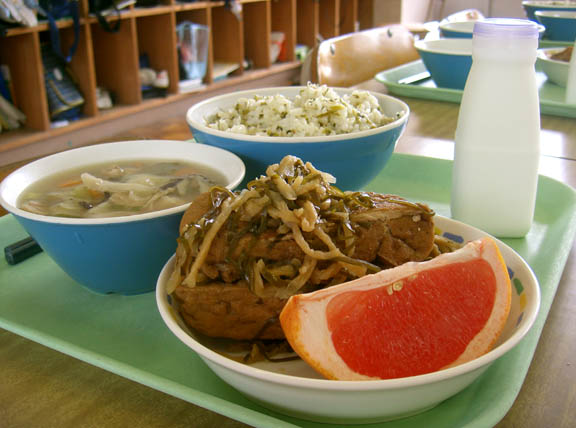
Takana gohan.
Agetofu (fried tofu) with a seaweed/dried daikon garnish.
Grapefruit.
Vegetable soup.
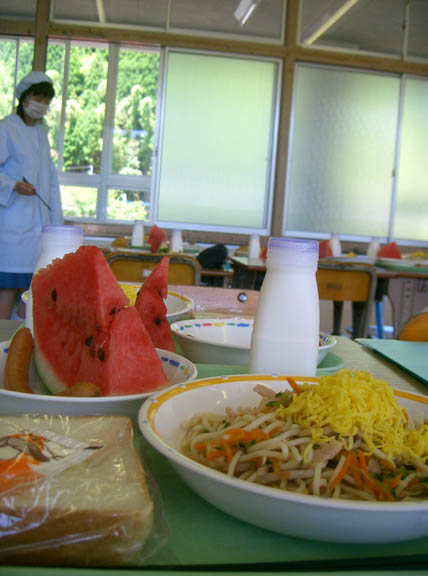
Spagetti noodles with ham, carrots, cucumber, and egg slices and a rice wine vinager sauce.
Wiener.
Watermelon.
White bread and margerine.
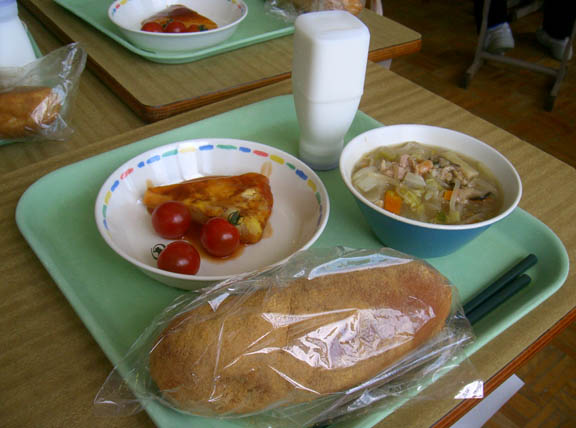
Potato omlette (tasted like a Spanish tortilla).
Cherry tomatos.
Vegetable soup.
Kinako Agepan (Fried bread dusted in kinako).
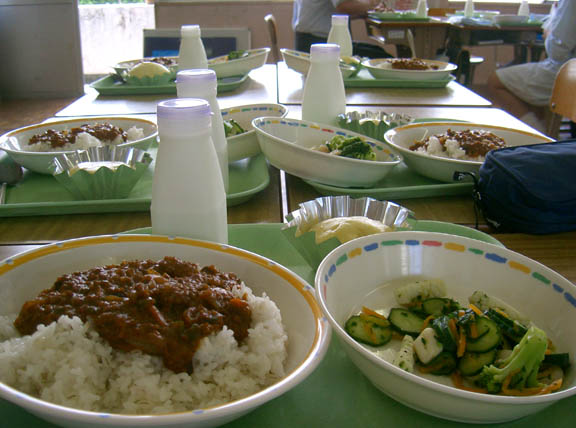
Hayashi rice (hayashi rice is like curry without the kick. I think of it as a cross between marinara and Japanese curry.).
Squid, cucumber, brocolli, and carrot salad with an aoshiso dressing.
Cornbread muffin.

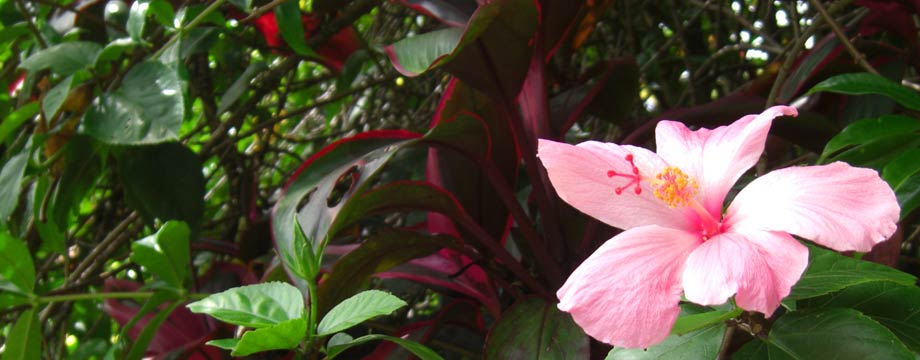
10 Responses to Kyushoku